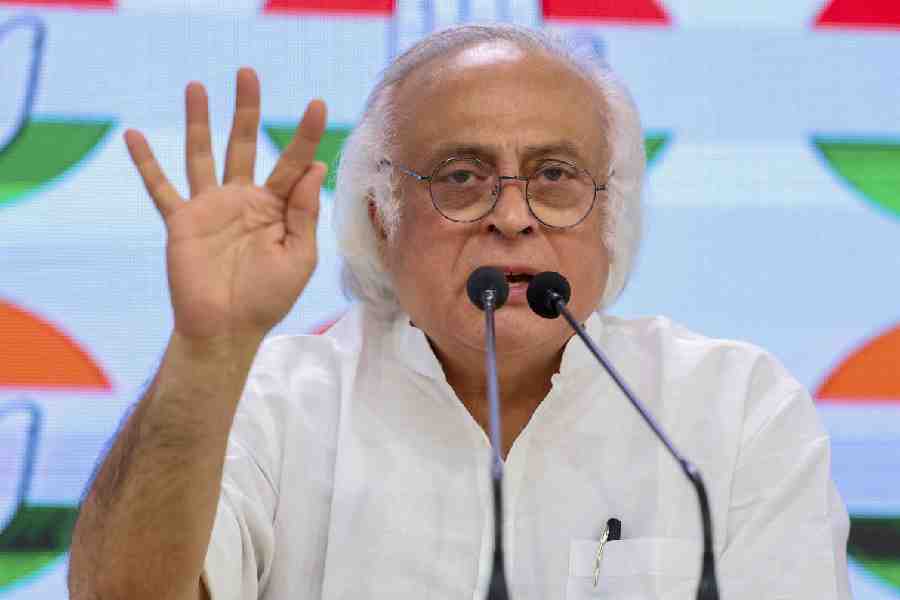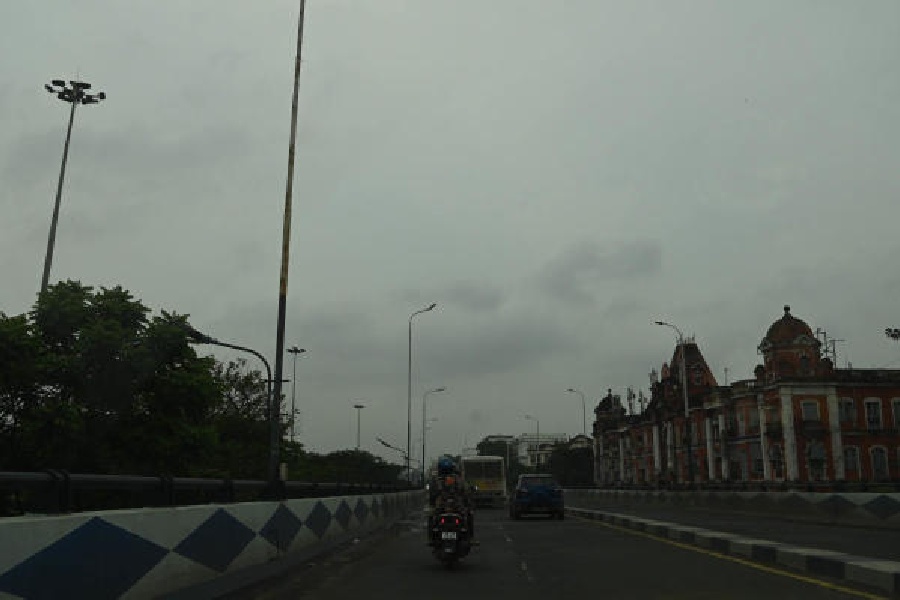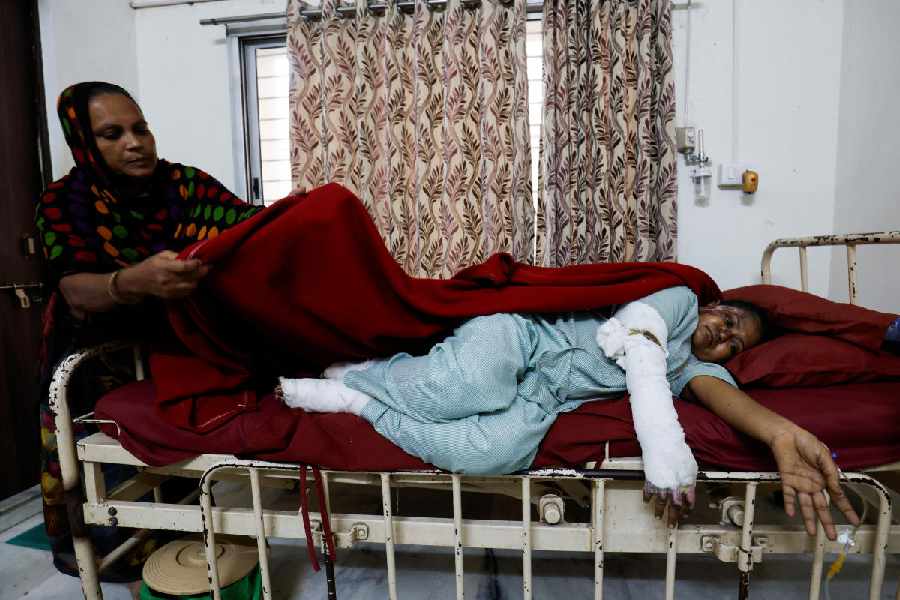 |
| The majestic Mehrangarh Fort stands tall against the backdrop of the azure sky |
Travelling alone, they say, does wonders for the self. How many times have I dismissed it with a snooty I-have-enough-friends-to-travel-with laugh? So when I set out for a three-day trip to Jodhpur all on my own, it was not without a sliver of doubt. Yet the last time I spent time discussing dates with friends, I ended up with no trip. It was now or never.
Armed with my safety companion, a little black and red bottle of pepper spray — I have so far used it only on a lizard in my apartment — I was on my very own adventure from the moment I boarded the night train to Jodhpur.
My destination was the Ranbanka Palace, a heritage hotel that’s a mere 10-minute drive from the station. If the red sandstone façade looming at the end of a leafy driveway was a balm to my sleepy senses, the icing was the royal suite with its double-poster bed, beautiful Persian carpets, a colonial-style wooden dressing table and a jharokha.
There’s no escaping Ranbanka’s royal past, built as it was by Maharaja Umaid Singh’s brother, Ajit Singh (one of the direct descendants of Rao Jodha, the chief of the Rathore clan, who founded the city of Jodhpur), in the 1940s.
 |
| Zip lining is sure to give you an adrenaline rush |
At times Ranbanka resembles a hunting lodge — especially when you walk through the private rooms of the present day owner, Prince Karan Vijay Singh (the grandson of Ajit Singh). You’re confronted by stuffed heads of long-snouted boars, tigers, leopards and antlered stags.
The show however belongs to two stuffed African inmates — a massive lion and a mammoth-sized elephant judging by its huge tusks. The stump-like elephant’s feet have been transformed into stools and one of its enormous ears has been converted into a table top with its trunk as the leg. All you can do is mutter, “Can this be?”
The pace of the trip picked up when I set out for the museum at the Umaid Bhavan Palace (the residence of the present king, Maharaja Gaj Singh), the royal cenotaphs at Jaswant Thada, and the ancient seat of the Rathore clan at Mandore Gardens (9km outside the city).
But the colour of Jodhpur lay in the old area around the Ghanta Ghar with its busy bazaars selling mounds of spices, grain, fabric, bangles and agricultural implements. On a brief aside, I have to take you into the hallowed portals of Mishri Lal, an innocuous looking shop in Ghanta Ghar where a must-try are its mogar kachoris, crisp hot pyaaz ki kachoris, spicy mirchi badas (whole stuffed chillies) and makhaniya lassi (sweetened yogurt drink with cream, butter and saffron).
I was happiest when I was tucking into local dishes like lal maas and mirchi kuta at Ranbanka. The food was sumptuous especially when it was laid out at candle-lit dinners to the tunes of the santoor and puppet shows.
A different experience lay in wait for me during a village safari. A couple of hours’ drive from the city, it took me into the world of the local workers like Prajapats or the Kumhars who spin durries and churn out pottery.
Then I ventured into the villages of the Bishnois — who made it to the headlines because of Salman Khan’s black-buck-shooting-incident. The Bishnois are committed to wildlife and environment. Famously, 363 villagers sacrificed their lives in 1730 AD to save trees in their villages that were being felled on the orders of the king. A memorial lies in Khejarli Village in a park, which is eerily quiet and home to skittish peacocks.
 |
| The Ranbanka Palace |
A typical Bishnoi villager I met was a gaunt man garbed in white, who lives for his addiction to opium — spending up to Rs 7,000 for a mere 100gm. As he crushed a chunk of opium, filtered it in a wooden contraption and offered some to the gods before tossing it down his throat, he talked about his four-odd trips to the rehab centres in the village. Let’s just say that listening to the confessions of a Bishnoi opium eater is one of life’s more unusual experiences.
The other highlight of my trip was the famous Mehrangarh Fort, perched 400ft above the city. The audio tour made it even better with its history narrated by a baritone voice with Rajasthani music in the background. Jodhpur has a tumultuous history — Rao Jodha founded his new capital at Mehrangarh in 1459 and buried a man alive in its walls to appease a saint. At another spot you see the saffron-coloured, dainty handprints of ranis who committed sati — a bit grisly, but you could not help but feel the romance of it all.
Standing on the ramparts of the fort, I saw why Jodhpur is called the Blue City. An entire section of it, Brahmpuri, where the Brahmins live, has roofs and outer walls all painted in various hues of blue.
It was also at Mehrangarh that I indulged in a zip line tour run by Flying Fox, a British adventure tourism company. There I was with the wind, harnessed and standing on the edge of a gorge looking down at a green lake way below. To tell the truth, I wanted to turn tail. But after I had glided down the first zip line, I was hooked and I completed the circuit of the next five zip lines.
There came a moment when I was dangling above the emerald Ranisar Lake — made by a queen to arrange for water for her subjects— and the challenge came up. I had to turn 180° slowly and haul myself back to the platform hand-over-hand. It made me feel pretty much like a commando. Would I do it again? Probably yes, but with a friend by my side to hold my hand.
Ready reckoner
 |
Best time to visit: Go during the Rajasthani International Folk Festival (RIFF) held at the Mehrangarh Fort in October; the Jodhpur International Desert Kite Festival that takes place around mid-January at the Polo Ground; or peg your visit around January/February during the Nagaur Fair.










